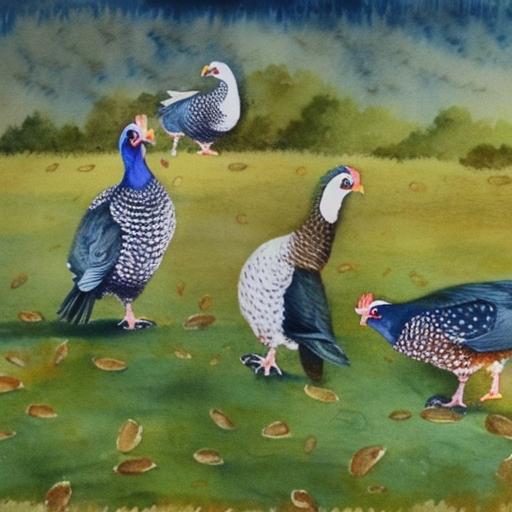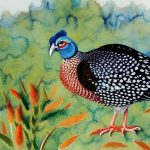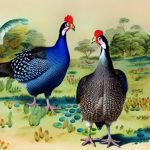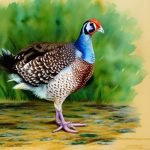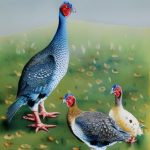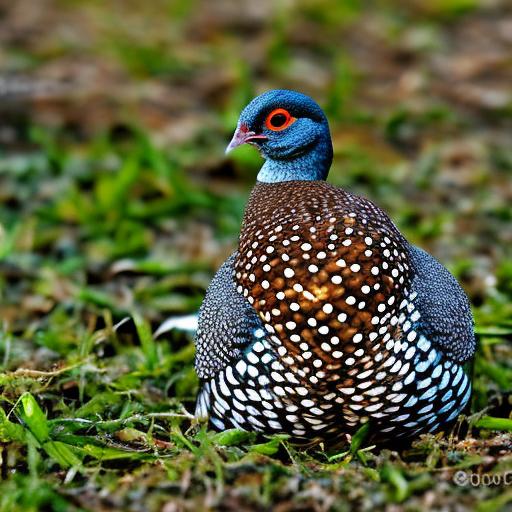The Vulturine Guinea Fowl, also known as Acryllium vulturinum, is a striking and unique species of guinea fowl native to East Africa. It is easily recognizable by its vibrant blue plumage, white spots, and a distinct vulturine-like appearance. These birds are highly social and are often found in large flocks in their natural habitat, which consists of dry savannas and scrublands. Vulturine Guinea Fowl are popular among aviculturists for their stunning appearance and their ability to thrive in captivity.
In addition to their striking appearance, Vulturine Guinea Fowl are known for their loud calls and active nature. They are excellent foragers and will eagerly consume insects, seeds, and small fruits. These birds are also known for their strong flying abilities, making them a joy to watch as they move gracefully through the air. Due to their unique characteristics and captivating beauty, Vulturine Guinea Fowl have become a sought-after species for aviculture enthusiasts around the world.
Key Takeaways
- Vulturine Guinea Fowl are striking birds known for their unique appearance and social behavior, making them a popular choice for aviculture.
- When selecting breeding stock, it is important to choose healthy, unrelated birds with desirable traits such as vibrant plumage and strong, upright posture.
- Breeding enclosures should provide ample space for the birds to roam and forage, as well as protection from predators and the elements.
- Proper incubation and hatching conditions, including temperature and humidity control, are crucial for the successful development of Vulturine Guinea Fowl eggs.
- Chick rearing and care involves providing a balanced diet, warmth, and protection from potential hazards to ensure the health and well-being of the young birds.
Selecting Breeding Stock
When selecting breeding stock for Vulturine Guinea Fowl, it is important to choose birds that are healthy, vibrant, and exhibit the desired traits of the species. Look for birds with vibrant blue plumage, well-defined white spots, and a strong vulturine-like appearance. It is also important to select birds that are active, alert, and show no signs of illness or deformities. Additionally, consider the birds’ behavior and social dynamics within the flock, as this can impact breeding success.
It is also crucial to consider the genetic diversity of the breeding stock to avoid inbreeding and maintain the overall health and vitality of the population. When possible, acquire breeding stock from different bloodlines to introduce new genetic material into the breeding program. This will help prevent the accumulation of deleterious genetic traits and ensure the long-term sustainability of the population. By carefully selecting breeding stock with strong physical characteristics and genetic diversity, aviculturists can contribute to the preservation and improvement of the Vulturine Guinea Fowl species.
Breeding Enclosure and Conditions
Creating a suitable breeding enclosure for Vulturine Guinea Fowl is essential for successful breeding and rearing of chicks. The enclosure should provide ample space for the birds to move freely and engage in natural behaviors such as foraging, dust bathing, and social interactions. A spacious outdoor aviary with natural vegetation, shrubs, and hiding spots will mimic the birds’ natural habitat and promote their overall well-being.
The breeding enclosure should also include nesting boxes or shelters where the hens can lay their eggs in a safe and secluded environment. Provide suitable nesting materials such as straw or grass to encourage natural nesting behaviors. Additionally, ensure that the enclosure is predator-proof to protect the birds from potential threats such as foxes, raccoons, or birds of prey.
Maintaining optimal environmental conditions within the breeding enclosure is crucial for successful breeding. Provide access to clean water, a balanced diet, and appropriate lighting to support the birds’ reproductive health. Monitoring temperature and humidity levels is also important, especially during the breeding season, to create a comfortable and conducive environment for breeding pairs. By providing a well-designed breeding enclosure with suitable conditions, aviculturists can create an ideal environment for Vulturine Guinea Fowl to thrive and reproduce.
Incubation and Hatching
Once the breeding pairs have laid their eggs in the nesting boxes, it is essential to carefully monitor the incubation process to ensure successful hatching. Vulturine Guinea Fowl eggs typically have an incubation period of around 24-28 days. It is crucial to maintain stable temperature and humidity levels within the incubator to support proper embryo development.
During incubation, regularly inspect the eggs for signs of fertility and monitor their progress using a process called candling. Candling involves shining a bright light through the egg to observe the development of the embryo and detect any potential issues such as infertility or early mortality. Remove any infertile or damaged eggs to prevent contamination and optimize the hatch rate.
As the hatch date approaches, prepare a clean and warm brooder area where the newly hatched chicks can be transferred for care and warmth. Provide access to fresh water, chick starter feed, and a suitable heat source to maintain optimal temperature for the chicks’ well-being. By carefully managing the incubation process and providing proper care for the newly hatched chicks, aviculturists can maximize the success of hatching Vulturine Guinea Fowl eggs.
Chick Rearing and Care
Rearing Vulturine Guinea Fowl chicks requires attentive care and proper nutrition to support their growth and development. Newly hatched chicks should be kept in a warm brooder area with access to clean water and a high-quality chick starter feed. Monitor their behavior and health closely to ensure they are thriving and receiving adequate nutrition.
As the chicks grow, gradually introduce them to outdoor environments within a protected area of the breeding enclosure. This will allow them to acclimate to natural elements while remaining safe from potential predators. Encourage natural behaviors such as foraging and dust bathing by providing suitable substrate and access to natural vegetation.
It is important to monitor the social dynamics within the chick group to prevent aggression or bullying among individuals. Providing ample space, hiding spots, and enrichment activities will help promote positive social interactions and reduce stress among the chicks. By providing attentive care, proper nutrition, and a stimulating environment, aviculturists can support the healthy growth and development of Vulturine Guinea Fowl chicks.
Health and Disease Management
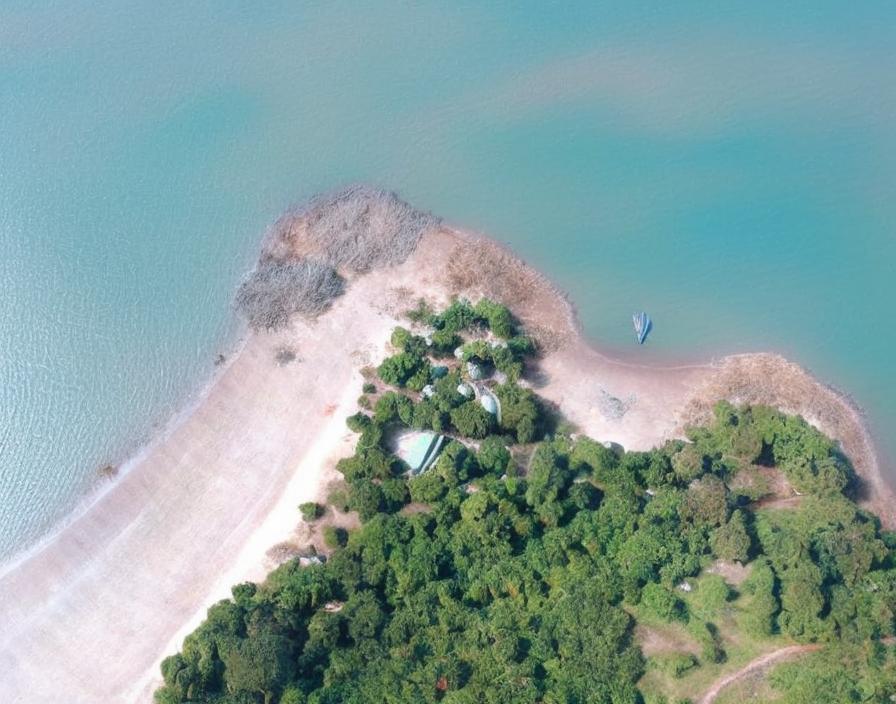
Maintaining optimal health and preventing disease outbreaks is crucial for the overall well-being of Vulturine Guinea Fowl. Regularly monitor the birds for signs of illness or abnormal behavior, such as lethargy, decreased appetite, or respiratory issues. If any health concerns arise, promptly isolate affected individuals and seek veterinary assistance to diagnose and treat any potential illnesses.
Implementing biosecurity measures within the breeding enclosure can help prevent the introduction and spread of diseases. This includes regular cleaning and disinfection of feeding and watering equipment, as well as limiting exposure to wild birds or other potential carriers of disease. Additionally, quarantine new birds before introducing them to existing flocks to prevent the transmission of infectious agents.
Providing a balanced diet rich in essential nutrients will support the birds’ immune system and overall health. Ensure access to fresh water at all times and offer a varied diet that includes high-quality commercial feed, fresh fruits, vegetables, and supplemental sources of protein such as mealworms or crickets. By maintaining strict biosecurity measures, providing a nutritious diet, and promptly addressing any health concerns, aviculturists can effectively manage the health of their Vulturine Guinea Fowl population.
Breeding for Conservation and Sustainability
As with many species of guinea fowl, Vulturine Guinea Fowl face threats such as habitat loss, hunting pressure, and potential decline in wild populations. Aviculturists play a crucial role in conservation efforts by maintaining healthy captive populations through responsible breeding practices. By carefully selecting breeding stock with strong genetic diversity and desirable traits, aviculturists can contribute to the preservation of this unique species.
In addition to maintaining healthy captive populations, aviculturists can also participate in cooperative breeding programs aimed at reintroducing Vulturine Guinea Fowl into their native habitats. These programs work to establish sustainable populations in protected areas where the species has been impacted by human activities or environmental changes. By collaborating with conservation organizations and wildlife authorities, aviculturists can contribute to the long-term conservation and sustainability of Vulturine Guinea Fowl in their natural range.
Furthermore, raising awareness about the conservation status of Vulturine Guinea Fowl through educational outreach programs can help garner support for conservation efforts both locally and internationally. By sharing knowledge about the species’ ecological importance and promoting responsible aviculture practices, aviculturists can inspire others to join in efforts to protect this stunning species for future generations. Through dedicated breeding efforts, collaborative conservation initiatives, and public engagement, aviculturists can make a meaningful impact on the conservation and sustainability of Vulturine Guinea Fowl.
If you’re considering breeding vulturine guinea fowl, you may also be interested in learning about the compatibility of guinea fowl with chickens. Poultry Wizard has a helpful article on whether guinea fowl can live with chickens, providing insights into their cohabitation dynamics. Check out the article here for valuable information on this topic.
FAQs
What is the breeding season for vulturine guinea fowl?
The breeding season for vulturine guinea fowl typically occurs during the rainy season, which varies depending on the region. In East Africa, it usually takes place from March to June.
How do vulturine guinea fowl build their nests?
Vulturine guinea fowl build their nests on the ground, usually in concealed spots such as under bushes or in tall grass. The female will scrape a shallow depression in the ground and line it with leaves, grass, and other vegetation.
How many eggs do vulturine guinea fowl lay?
A female vulturine guinea fowl can lay anywhere from 8 to 15 eggs in a single clutch. The eggs are typically incubated for about 24-28 days before hatching.
What is the role of the male vulturine guinea fowl in the breeding process?
The male vulturine guinea fowl plays a significant role in the breeding process. He will often stay close to the female and the nest, and will help to protect the eggs and chicks from predators.
How long does it take for vulturine guinea fowl chicks to become independent?
Vulturine guinea fowl chicks are precocial, meaning they are relatively mature and mobile from the moment they hatch. They are able to forage for food and become independent from their parents within a few weeks.
Meet Walter, the feathered-friend fanatic of Florida! Nestled in the sunshine state, Walter struts through life with his feathered companions, clucking his way to happiness. With a coop that’s fancier than a five-star hotel, he’s the Don Juan of the chicken world. When he’s not teaching his hens to do the cha-cha, you’ll find him in a heated debate with his prized rooster, Sir Clucks-a-Lot. Walter’s poultry passion is no yolk; he’s the sunny-side-up guy you never knew you needed in your flock of friends!

